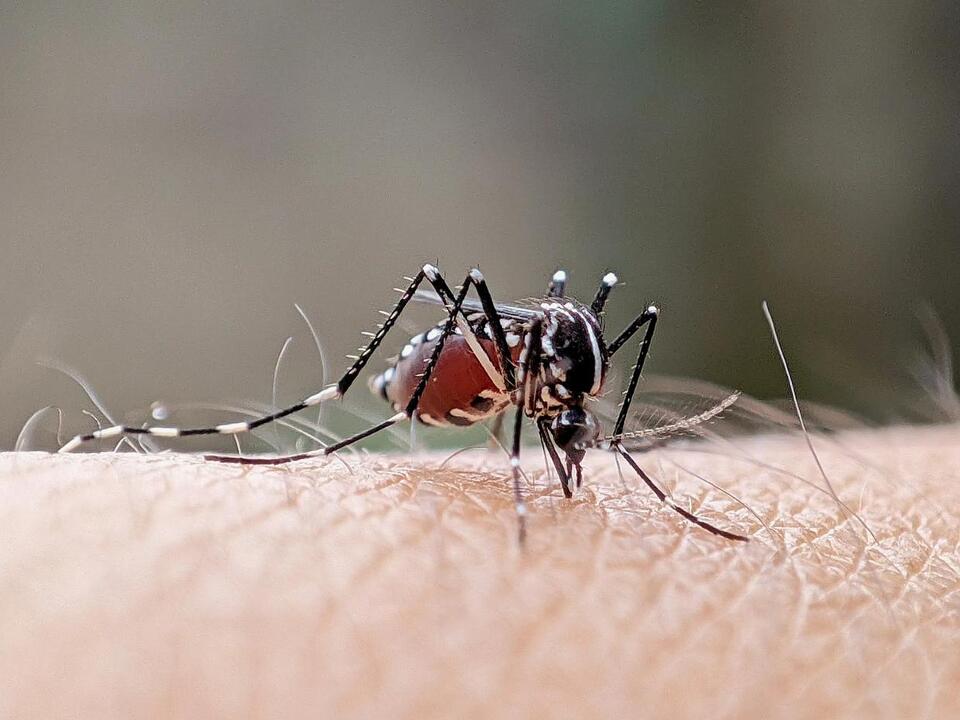Physical Address
304 North Cardinal St.
Dorchester Center, MA 02124
Physical Address
304 North Cardinal St.
Dorchester Center, MA 02124

U.S. health officials have raised alarms regarding a dangerous insect-borne virus known as Oropouche virus, commonly referred to as sloth fever. This virus has infected 21 individuals in the U.S. who recently returned from Cuba, along with thousands of cases reported throughout South America and the Caribbean.
As of August 1, over 8,000 instances of Oropouche virus disease were recorded in countries such as Brazil, Bolivia, Peru, Colombia, and Cuba. Cases have also emerged in the U.S. and Europe, linked to travelers returning from these regions, according to the Centers for Disease Control and Prevention (CDC).
Sloth fever is an informal term for Oropouche virus infections, which were first identified in Trinidad and Tobago in 1955. The virus is primarily transmitted through bites from midges and mosquitoes and is endemic to central and eastern South America. The current outbreak has seen cases concentrated in Brazil, Bolivia, Peru, Colombia, and Cuba, with U.S. cases mainly involving travelers who returned to Florida and New York.
While the informal name “sloth fever” suggests a specific association, the virus can also infect rodents, monkeys, and birds. This interconnectedness among species raises further public health concerns.
Most infections from Oropouche virus are mild; however, two healthy women in Brazil, aged 21 and 24, tragically succumbed to the virus. Symptoms typically arise three to ten days post-infection and may include fever, chills, headaches, and muscle and joint pain or stiffness. Other potential symptoms encompass vomiting, diarrhea, exhaustion, rashes, stomach discomfort, light sensitivity, and redness of the eyes. Medical professionals generally recommend managing symptoms through rest, hydration, and the use of acetaminophen for fever and pain relief.
Public health officials are particularly alarmed by instances of mother-to-fetus transmission.
Recent laboratory tests have confirmed five cases where an infected mother transmitted the virus to her fetus. Unfortunately, one fetus died, while four others showed signs of microcephaly, a condition where a baby’s head is smaller than normal. The CDC has indicated that these reports suggest a concerning link between the virus and both fetal death and possible congenital malformations, heightening concerns regarding the Oropouche virus’s threat to human health.
In light of these developments, the CDC is emphasizing the need to curtail the virus’s spread to the U.S. and other largely unaffected regions.
For pregnant women, the CDC advises caution regarding travel to areas where the Oropouche virus has been reported. Healthcare providers are encouraged to alert pregnant patients about the risks associated with traveling to regions experiencing outbreaks. Pregnant travelers should take measures to protect themselves from insect bites and may want to postpone any trips to areas where sloth fever is present.
In the U.S., confirmed cases of Oropouche virus have been recorded among 20 residents in Florida and one resident in New York who traveled to Cuba. Most patients sought medical evaluation upon showing symptoms, although three reported recurring symptoms. The average age of affected patients was 48 years. The most frequently reported symptoms included fever, muscle pain, headaches, fatigue, and joint discomfort. Other symptoms reported by patients included diarrhea, stomach cramps, nausea, vomiting, rashes, back pain, and bleeding.
As the situation evolves, health officials remain vigilant, underscoring the importance of awareness and preventative measures to mitigate the impact of this emerging virus.
Source: USA Today



